 Satellite Electronic Warfare is considered “non-kinetic,” but can have devastating effects, as seen in the ongoing conflict between Russia and Ukraine. (Source: Shutterstock)
Satellite Electronic Warfare is considered “non-kinetic,” but can have devastating effects, as seen in the ongoing conflict between Russia and Ukraine. (Source: Shutterstock)
Several dozen Ukrainian soldiers huddled around their communications officer in a grassy field north of Kherson. Technicians pointed a satcom antenna dish at the sky and wired cables into a kit of electronics. The comms officer raised the handset to his mouth. “9th Rifle Division, reporting from Kherson. Over.”
The handset hissed with static, then broadcast a clear voice: “Copy, 9th Rifle. Southern Command reads you. Stand by for orders. Over.”
After several seconds of silence, the voice on the radio began again, “9th Rifle, you have an inbound Russian heavy armored brigade approaching from-… [HISS HISS] …immediately… [HISS HISS].”
The comms officer replied, “Say again, Command. We did not copy!” The handset broadcast a steady hiss of static. The officer scanned the equipment at his feet and saw one red LED pulsing among otherwise green lights: “INTERFERENCE DETECTED.” He dropped the handset. “They jammed us. We’re cut off.”
The details above are based on speculation, but similar scenarios may have occurred countless times during the Russia-Ukraine conflict. Satellite jamming is an acknowledged and expected wartime technique, and industry experts have observed Russia and Ukraine trading blows in space.
Satellite Electronic Warfare (EW) is considered a “non-kinetic” attack, but it is far from benign. Communication channels are literal lifelines for soldiers, directing them to safety or providing real-time direction to outmaneuver an enemy. Satellite jamming severs this lifeline, and the consequences can be deadly.
Electromagnetic Interference 101
Satellite jamming uses electromagnetic interference (EMI) to degrade a radio frequency (RF) communication channel by transmitting another signal that overlaps the intended signal. Think of this like an inconsiderate party guest who talks over a conversation; if the guest speaks loudly enough, no one can understand the original speaker.
EMI comes in several forms, and it often happens accidentally, like when a ground antenna points at the wrong satellite. The term “jamming” implies an intentional effort to degrade or deny other users. In satellite communication, uplink jamming is especially common, and surprisingly easy and inexpensive to create.
Here’s how it works.
Most communication satellites function like wireless repeaters in the sky, relaying signals between two geographically separated ground locations. A user transmits into the satellite’s uplink, which the satellite receives and re-broadcasts back toward Earth in a downlink, where it is received by the intended recipient, as shown in Figure 1.
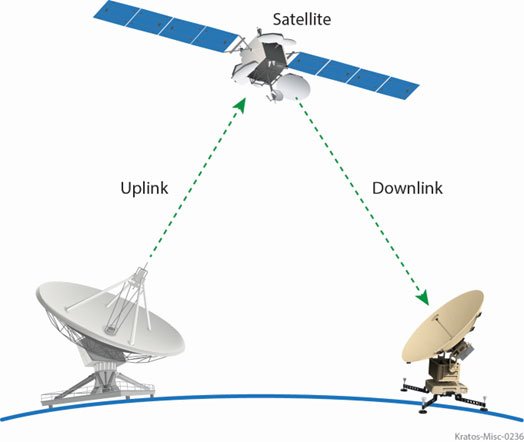 Figure 1: Communication satellites relay signals from uplink to downlink locations. (Source: Kratos)
Figure 1: Communication satellites relay signals from uplink to downlink locations. (Source: Kratos)
Here’s the crucial design point. Satellites re-broadcast ALL signals they receive from an uplink; they have no way to determine if a given signal is authorized or nefarious. Uplink jammers exploit this fact by tuning to the same frequency channel as their “victim,” then transmitting into the uplink along with the victim signal. The satellite relays both signals into the downlink, thus jamming the intended recipient, as shown in Figure 2.
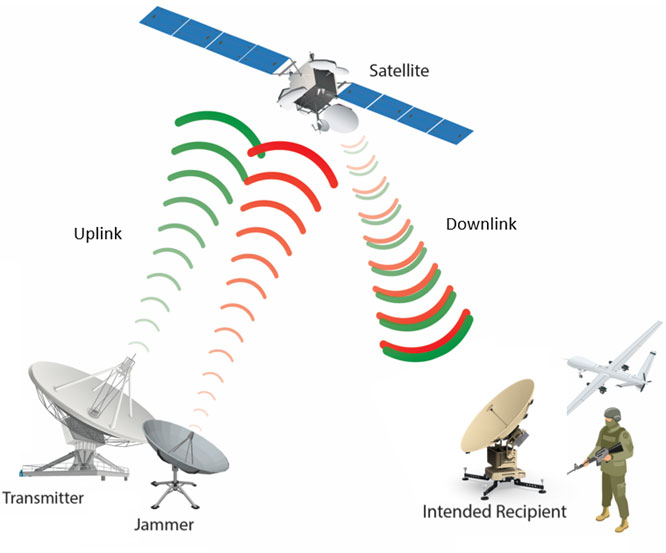 Figure 2: Uplink jamming injects an interfering signal into the satellite uplink. (Source: Kratos)
Figure 2: Uplink jamming injects an interfering signal into the satellite uplink. (Source: Kratos)
Uplink jamming requires relatively simple, inexpensive RF equipment and only basic technical expertise. Most importantly, the jammer may be thousands of miles away from the intended recipient – an adversary can jam into an active conflict zone from the safety of their home country. This technique is familiar to the Russian military, as we see in the example below.
Russian Activity in Ukraine
Space Domain Awareness (SDA) analysts at Kratos have observed a long history of Russian uplink jamming on satellites supporting Western nations. After the Ukraine invasion in February 2022, these EMI events greatly intensified over Eastern Europe. In one example, Kratos monitored an RF signal on satellite AMOS-3 carrying direct-to-home television broadcasts for Ukraine and observed signal outages due to strong but intermittent EMI.
Television stations are not obvious targets for electronic warfare, but analysts noticed a unique correlation between the broadcast contents and jamming activity. The jamming signal turned on each time programming switched to press conferences featuring the Ukrainian armed forces commander, General Valerii Zaluzhnyi. When the press conferences concluded, so did the jamming. This pattern of behavior clarifies the intent: the jammer most likely intended to censor public updates on Ukrainian military operations, and it appeared to do so effectively.
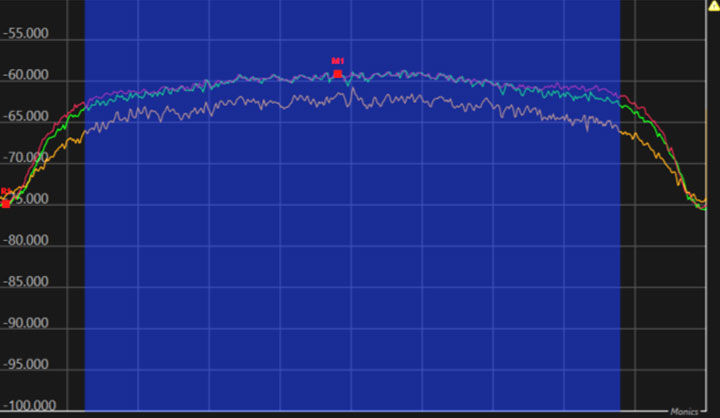 Figure 3: RF spectrum plot of Russian matched waveform (yellow) jamming Ukrainian television broadcast (green). (Source: Kratos/KGSN)
Figure 3: RF spectrum plot of Russian matched waveform (yellow) jamming Ukrainian television broadcast (green). (Source: Kratos/KGSN)
Further signal analysis by Kratos calculated a ground location for the uplink jammer used above, northeast of Moscow, near a government building associated with Russia’s Central Research Institute of the Ministry of Defense. This organization is known to develop counter-space capabilities for the Russian military. Open source imagery shows several large satcom antennas on the roof of this building, with one pointed directly at AMOS-3. Analysts conclude with moderate certainty that the signals jamming Ukrainian television were broadcast from this antenna.
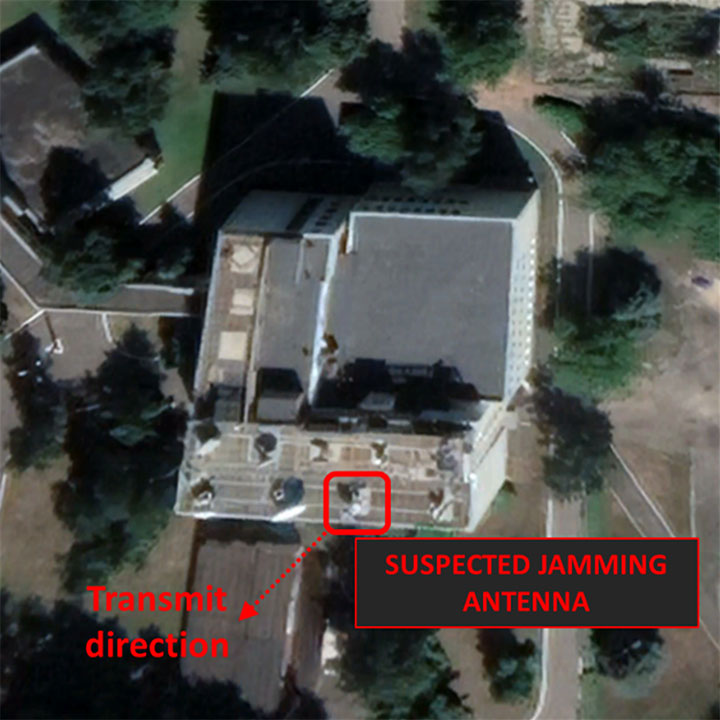 Figure 4: Suspected location of Russian jamming antenna.
Figure 4: Suspected location of Russian jamming antenna.
As the Ukrainian conflict progressed through 2022 and 2023, Kratos observed numerous instances of apparent uplink jamming against Ukrainian satellite communications. Some of these jammers were located around Moscow, but others originated from locations throughout western Russia and Russian-occupied Ukraine. This likely indicates the deployment of mobile jamming kits, colocated with Russian troops in the region.
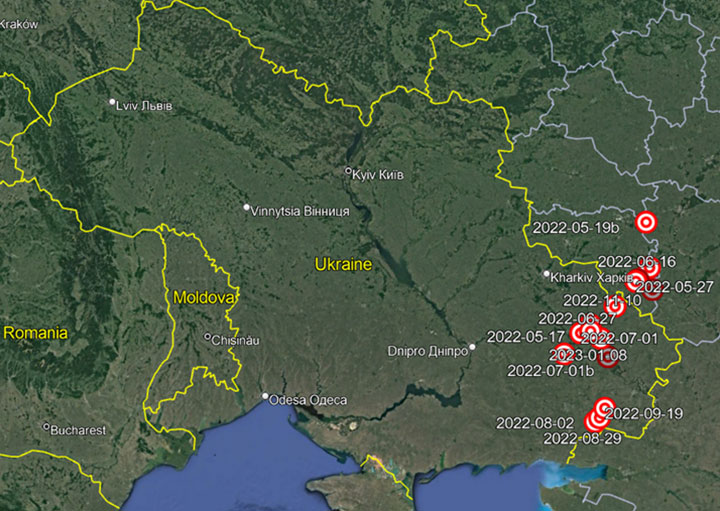 Figure 5: Location of Russian jamming signals, May 2022 – January 2023. (Source: Google Earth)
Figure 5: Location of Russian jamming signals, May 2022 – January 2023. (Source: Google Earth)
Russia’s widespread and long-running jamming campaigns highlight the power of EMI in modern warfare. Many nations participate in space EW, and SDA analysts have observed Ukraine returning fire through its own uplink jamming of Russian satellites. While the public may consider tanks and missiles the most powerful weapons of armed conflict, antennas and radios pack a dangerous punch too.
Michael Clonts is the Director of Space Domain Awareness Initiatives at Kratos Defense.
Explore More:
Espionage in Orbit: Satellite or Spy?
Podcast: Tracking LEOs, Growth in Resident Space Objects and the Problem with Uncertainty
DoD’s Commercial Space Domain Awareness Dilemma
